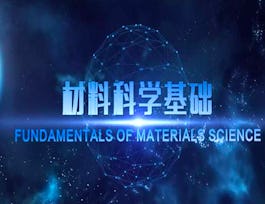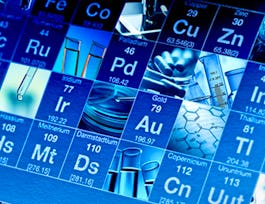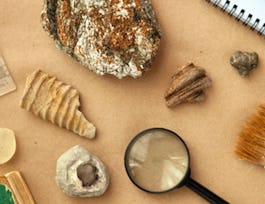We explore “10 things” that range from the menu of materials available to engineers in their profession to the many mechanical and electrical properties of materials important to their use in various engineering fields. We also discuss the principles behind the manufacturing of those materials.



Materials Science: 10 Things Every Engineer Should Know

Instructor: James Shackelford
Sponsored by Abu Dhabi National Oil Company
104,291 already enrolled
(4,446 reviews)
Details to know

Add to your LinkedIn profile
11 assignments
See how employees at top companies are mastering in-demand skills


Earn a career certificate
Add this credential to your LinkedIn profile, resume, or CV
Share it on social media and in your performance review

There are 5 modules in this course
Welcome to week 1! In lesson one, you will learn to recognize the six categories of engineering materials through examples from everyday life, and we’ll discuss how the structure of those materials leads to their properties. Lesson two explores how point defects explain solid state diffusion. We will illustrate crystallography – the atomic-scale arrangement of atoms that we can see with the electron microscope. We will also describe the Arrhenius Relationship, and apply it to the number of vacancies in a crystal. We’ll finish by discussing how point defects facilitate solid state diffusion, and applying the Arrhenius Relationship to solid state diffusion.
What's included
10 videos2 assignments
Welcome to week 2! In lesson three we will discover how dislocations at the atomic-level structure of materials explain plastic (permanent) deformation. You will learn to define a linear defect and see how materials deform through dislocation motion. Lesson four compares stress versus strain, and introduces the “Big Four” mechanical properties of elasticity, yield strength, tensile strength, and ductility. You’ll assess what happens beyond the tensile strength of an object. And you’ll learn about a fifth important property – toughness.
What's included
10 videos2 assignments
Welcome to week 3! In lesson five we’ll explore creep deformation and learn to analyze a creep curve. We’ll apply the Arrhenius Relationship to creep deformation and identify the mechanisms of creep deformation. In lesson six we find that the phenomenon of ductile-to-brittle transition is related to a particular crystal structure (the body-centered cubic). We’ll also learn to plot the ductile-to-brittle transition for further analysis.
What's included
8 videos2 assignments
Welcome to week 4! In lesson seven we will examine the concept of critical flaws. We’ll define fracture toughness and critical flaw size with the design plot. We’ll also distinguish how we break things in good and bad ways. Lesson eight explores the concept of fatigue in engineering materials. We’ll define fatigue and examine the fatigue curve and fatigue strength. We’ll also identify mechanisms of fatigue.
What's included
10 videos2 assignments
Welcome to week 5! In lesson nine we’ll deal with how to make things fast and slow. We’ll examine the lead-tin phase diagram and look at its practical applications as an example of making something slowly. Then we’ll evaluate the TTT diagram for eutectoid steel, and compare diffusional to diffusionless transformations with the TTT diagram, monitoring how we make things rapidly. Lesson ten is a brief history of semiconductors. Here, we discuss the role of semiconductor materials in the modern electronics industry. Our friend Arrhenius is back again, and this time we’re applying the Arrhenius Relationship to both intrinsic and extrinsic semiconductors. We’ll also look at combined intrinsic and extrinsic behavior.
What's included
12 videos3 assignments
Instructor

Offered by
Why people choose Coursera for their career




Learner reviews
4,446 reviews
- 5 stars
76.16%
- 4 stars
20.10%
- 3 stars
2.96%
- 2 stars
0.51%
- 1 star
0.24%
Showing 3 of 4446
Reviewed on Nov 23, 2016
It is a really good course. I would recommend it to everyone interested in materials or engineering. This course helped me get a better understanding of some fundamental concepts of engineering.
Reviewed on Sep 23, 2020
This course is good for engineers. It illustrated many fundemental and important concept in materials science. The teacher is great who explain nearly everthings in details with words and experiments.
Reviewed on Jun 15, 2020
It was a very good short course. Was very useful and informative. The videos were very creatively made. The shorter duration of each videos was an added plus to get the solid attention of the viewers
Recommended if you're interested in Physical Science and Engineering

Shanghai Jiao Tong University

Arizona State University

Arizona State University

Arizona State University

Open new doors with Coursera Plus
Unlimited access to 10,000+ world-class courses, hands-on projects, and job-ready certificate programs - all included in your subscription
Advance your career with an online degree
Earn a degree from world-class universities - 100% online
Join over 3,400 global companies that choose Coursera for Business
Upskill your employees to excel in the digital economy


